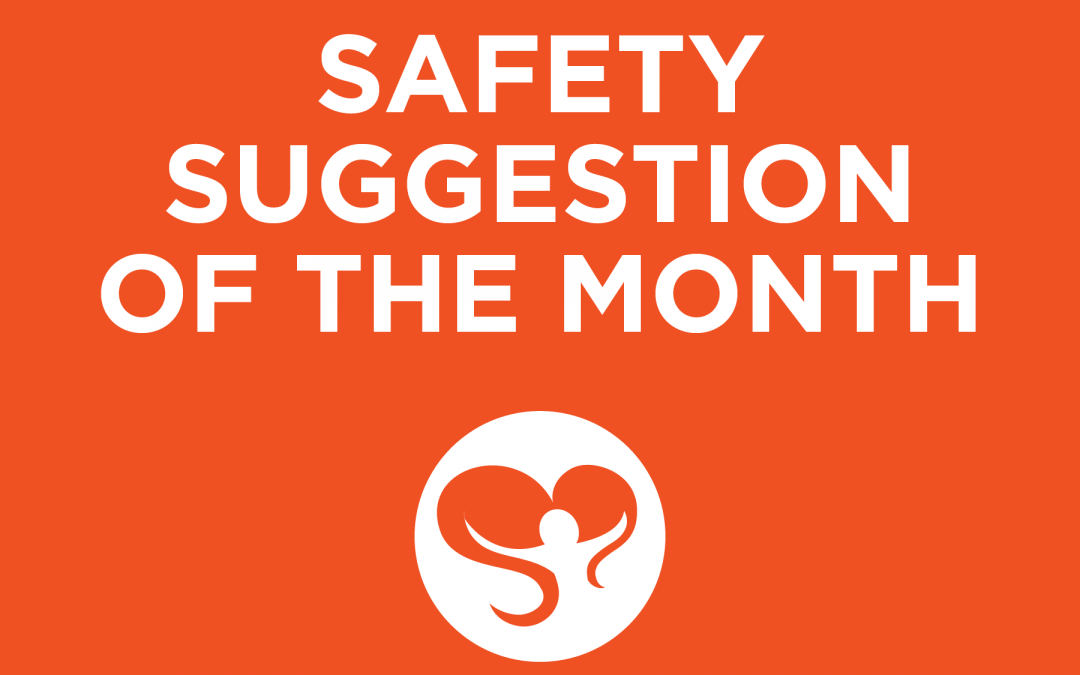Injury Reporting and Why It’s Important
Have you ever wondered why employees are required to report all injuries, even minor ones? Are you curious about what happens to this information? This article aims to provide an overview of why reporting is critical and how this information is used by Springbrook and by outside organizations.
One reason why reporting injuries is essential is to comply with NY State Workers’ Compensation law and the federal Occupational Safety and Health Administration’s (OSHA) regulations. Different types of injuries get reported differently, and not all injuries reported for workers’ compensation purposes must go to OSHA, and vice versa.
OSHA ensures that workplaces are as safe as possible for the workers, and they do this by making site visits and by reviewing annual reports that employers submit, which detail the number and types of injuries and illnesses that a workplace has experienced over the course of each year. This information helps employers, workers, and OSHA evaluate the safety of a workplace, understand industry hazards, and implement worker protections to reduce and eliminate risks –preventing future workplace injuries and illnesses.
For example, if an employee is hurt on the job and is given a doctor’s note saying that (s)he cannot work for two days, that incident must be recorded in the employee’s files, maintained in that record for at least five years, and reported to OSHA. Employers must record and report to OSHA any work-related injuries and illnesses that result in the following:
- Death,
- loss of consciousness,
- days away from work,
- restricted work activity or job transfer, or
- medical treatment beyond first aid
Reporting a work-related injury or illness is a core employee right, and retaliating against a worker for reporting an injury or illness is illegal discrimination under the OSH Act. Other whistleblower statutes may protect employees who report workplace injuries. If employees do not feel free to report injuries or illnesses, the employer’s entire workforce could be at risk; employers do not learn of, and correct dangerous conditions that have resulted in damages, and injured employees may not receive proper medical attention or workers’ compensation benefits to which they are entitled. Ensuring that employees can report injuries and illnesses without fear of retaliation is therefore crucial to protecting worker safety and health.
Workers’ compensation has different objectives than OSHA; it is a type of insurance that provides cash benefits and/or medical care for workers who are injured or become ill as a direct result of their job. The goal of workers’ compensation is to assist injured or sick employees in returning to work. Workers’ compensation creates a no-fault system that requires employers to carry insurance for their workers, and it protects employers from liability for workplace incidents. An injured employee who fails to report an incident to his or her employer, in writing, within 30 days after the date of the accident causing the injury, may lose the right to workers’ compensation benefits. In the case of occupational disease, reporting must take place within two years after disablement, or within two years after the claimant knew or should have known that the illness was work-related, whichever is later.
Another reason Springbrook collects information about injuries is to examine that data for patterns or issues that may signal a need for a staffing change, retraining of workers or managers, or even an adjustment to an individual’s service plan. Behaviors from the individuals we serve have caused a significant number of injuries to Springbrook’s workers. By reporting the injuries and including the initials of any individual involved, managers should track incidents involving those people to see if there are any beneficial changes or improvements available for all involved. The reporting form asks for information such as the circumstances leading up to the injury, whether the employee was wearing personal protective equipment, and requests the employee’s opinion on whether an unsafe work environment contributed to the injury. In this way, the report also serves as an opportunity for employees to give input into the organization’s overall safety measures. By completing reports in a thorough and detailed manner, employees help ensure that management is getting vital information needed to address workplace hazards and prevent future injuries.
For all the above reasons an injury report must be completed as thoroughly and quickly as possible every time there is an incident where an employee is hurt, made ill, exposed to potentially infectious material, or becomes aware of a work-related cumulative condition. Timely and thorough completion of reports facilitates a faster, smoother process for all involved. It is also helpful to provide information on any medical treatment received, restrictions on duties, and days missed, as this triggers related processes such as worker accommodations and leaves of absence.
While injury reporting is a crucial element of any workplace safety plan, the most important thing when an injury or illness has occurred is for the employee to obtain first aid or other necessary medical treatment as soon as possible. Employees are encouraged to report incidents when they happen; however, the priority should always be the employee’s immediate medical needs.
If you have any questions about injury/illness reporting in general or concerning a specific incident, don’t hesitate to contact Human Resources at humanresources@springbrookny.org. And as always, feel free to contact the Safety Committee with any questions, suggestions or concerns at safetyideas@springbrookny.org.

